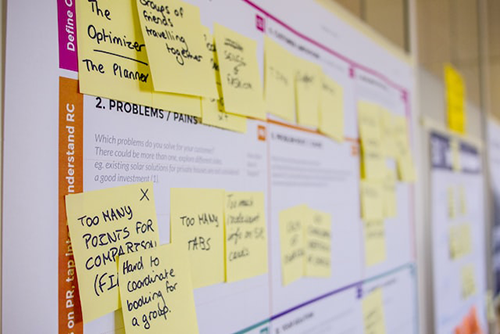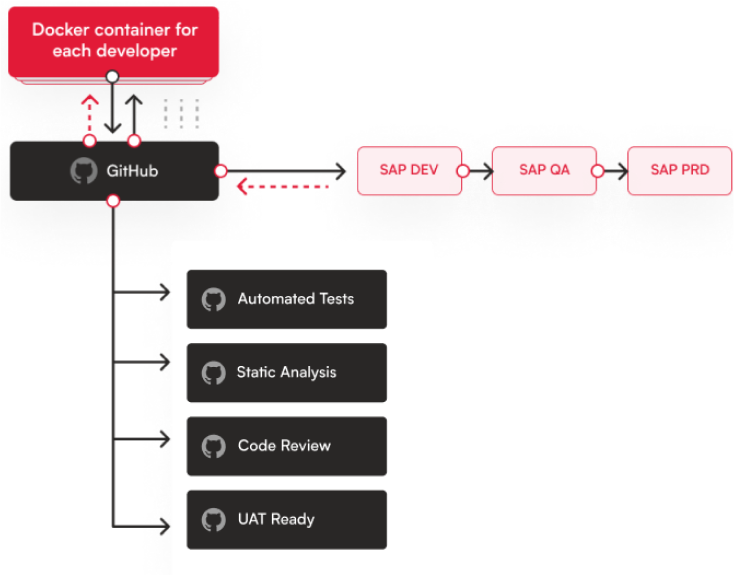Challenge: Developing in SAP is slow, expensive, and risky.
Most SAP systems are used for critical business tasks, so any changes must be thoroughly tested before release. Creating replica environments for development and testing can also be costly, meaning multiple developers share a single system. Consequently, managing dependencies and version control between changes to the system poses a significant challenge.
In addition, introducing organizational changes can be challenging since workflows are typically well-established. Changing these workflows while maintaining high-release quality can seem daunting.
Interestingly, these are the same challenges developers at companies like Microsoft, Google, and Amazon faced almost two decades ago. However, they found some innovative solutions to overcome these obstacles.
Status Quo
Waterfall development on a shared development environment with significant manual dependency management.

Solution: Apply Development Best Practices to SAP Systems
What if the development practices used by companies like Google, Microsoft, and Amazon were available to SAP developers?
That seemed impossible a few years ago, but with the advent of infrastructure-as-code tools, it is now possible to:
- Set up an isolated SAP development system in less than 10 minutes
- Attach that system to anonymized data or a snap-shot of production data
- Make changes to that system via a modern version control system like GitHub or Bitbucket
- Create and run automated tests on those changes
- Merge into the main branch for release to QAS or PRD
All in parallel, with systems that cost less than a cup of coffee per hour. ☕️
Now Possible
Each developer runs their own instance and can update their system with changes made by other developers.

Parallel Development
Each developer runs their own container. Git manages discrete changes with version control history.
Deploys
The main code repo (with the latest changes) can be deployed to QA after automated tests pass and to PRD after UAT passes.
Continuous Integration
Automated tests, static analysis, and code reviews can all be completed using the same techniques that modern tech companies employ.
Results: Faster Deploys and Lower Risk
With Nuve Platform's automated development system setups and our modern git workflows, it's now possible to develop on top of SAP in the same ways that Google, Microsoft, and Amazon build their systems.
You can empower your developers to work in parallel, write their own tests to make code more robust, and manage dependencies between changes like the best software companies in the world do.
And we can help you roll it out in a way your organization can digest, generating quick wins and building buy-in along the way. There's no need to do everything at once.
We know how development should work, so let's make it happen together.
If you’d like to see how this can work for your team, reach out to schedule a call.
Credits
Photo by Daria Nepriakhina 🇺🇦 on Unsplash
Transform your business with ease using Nuve's powerful platform. With fast SAP systems, you can achieve the same success as other Nuve customers. Sign up now and see how easy it is to take your business to the next level.
Get started